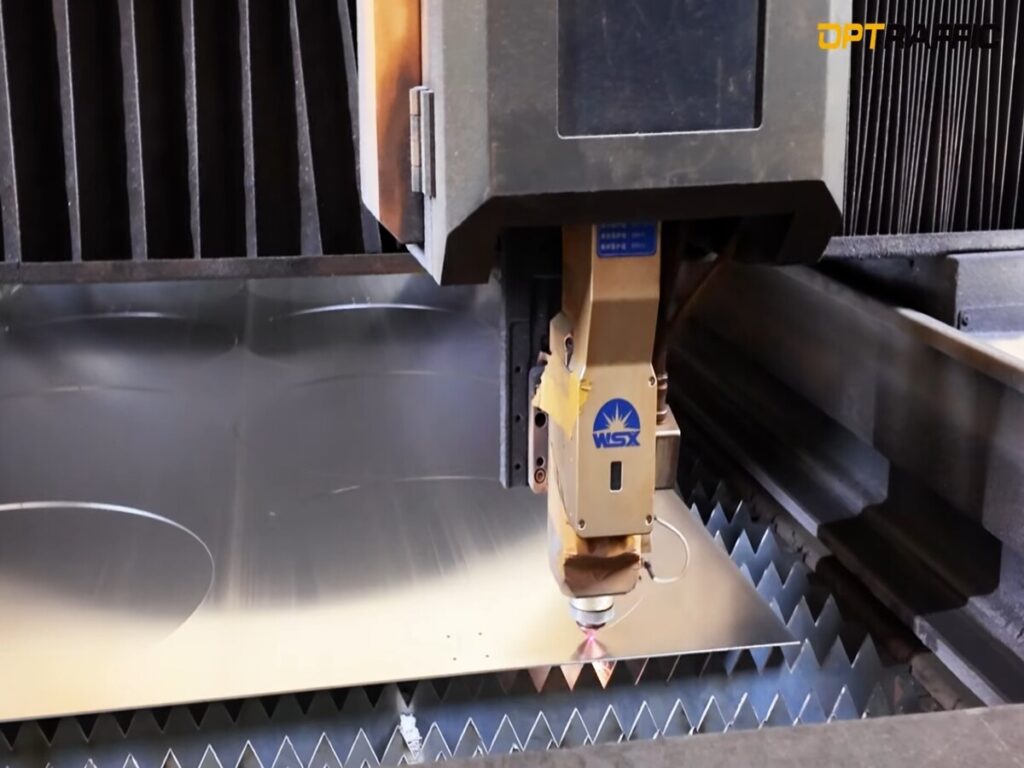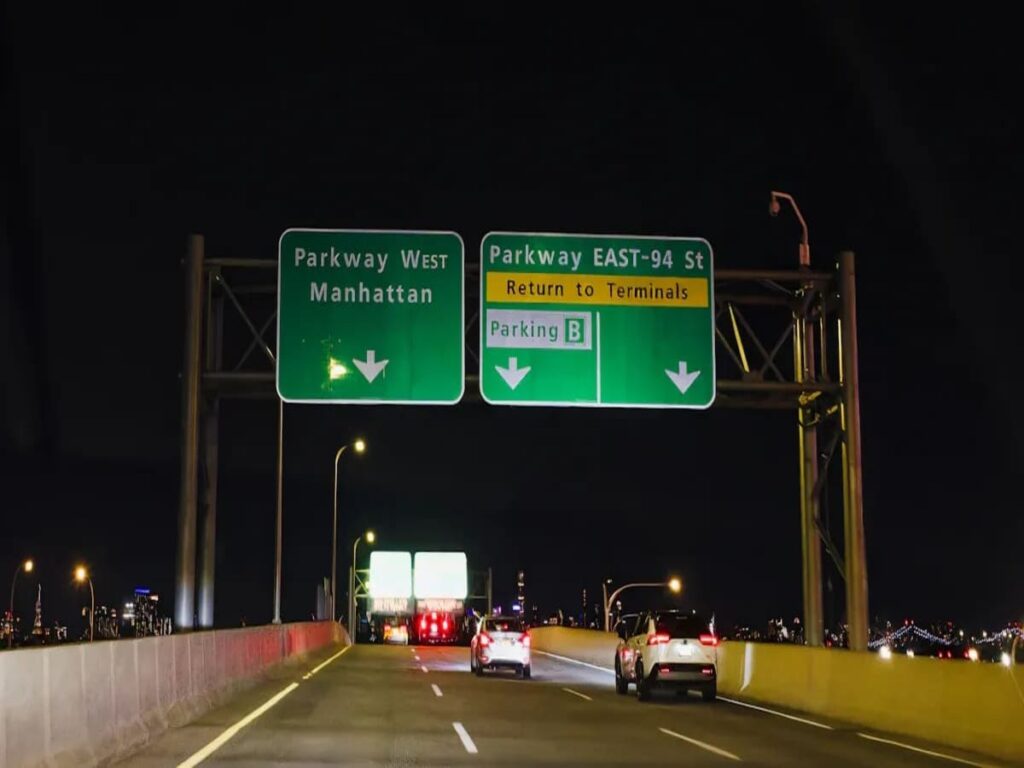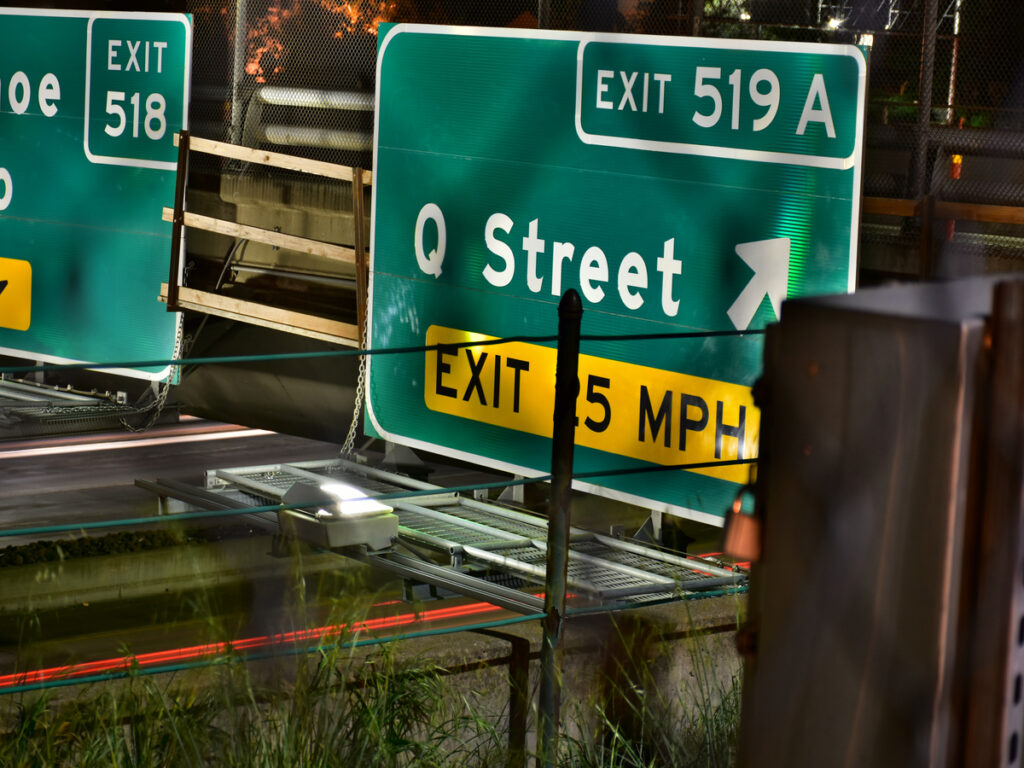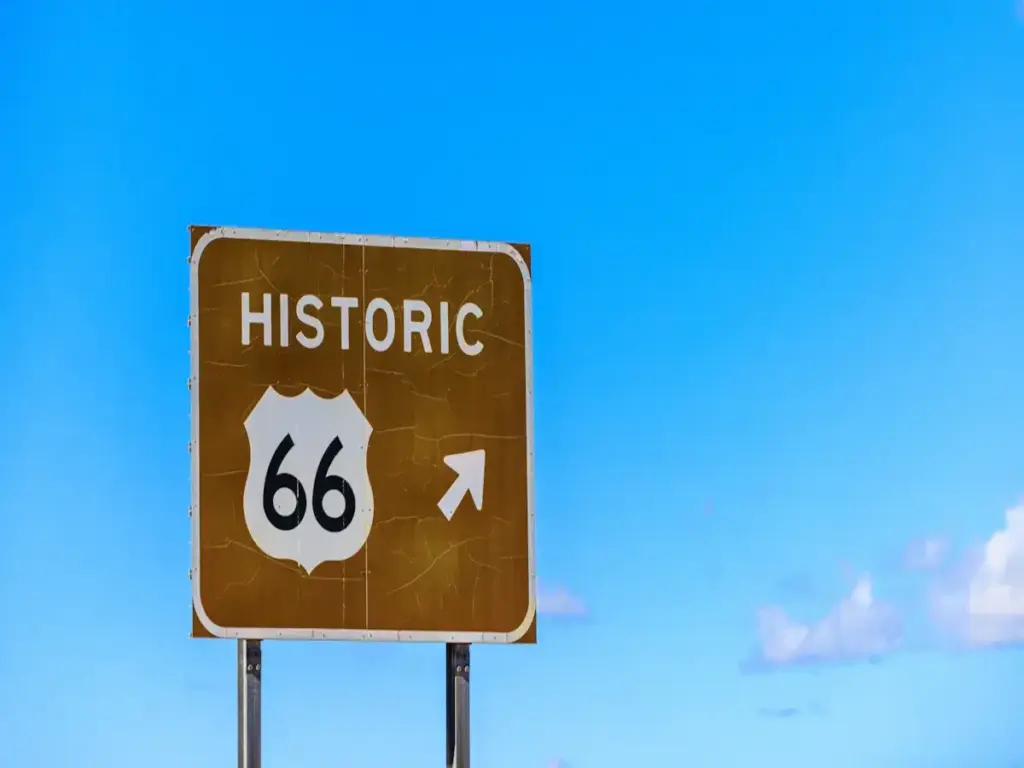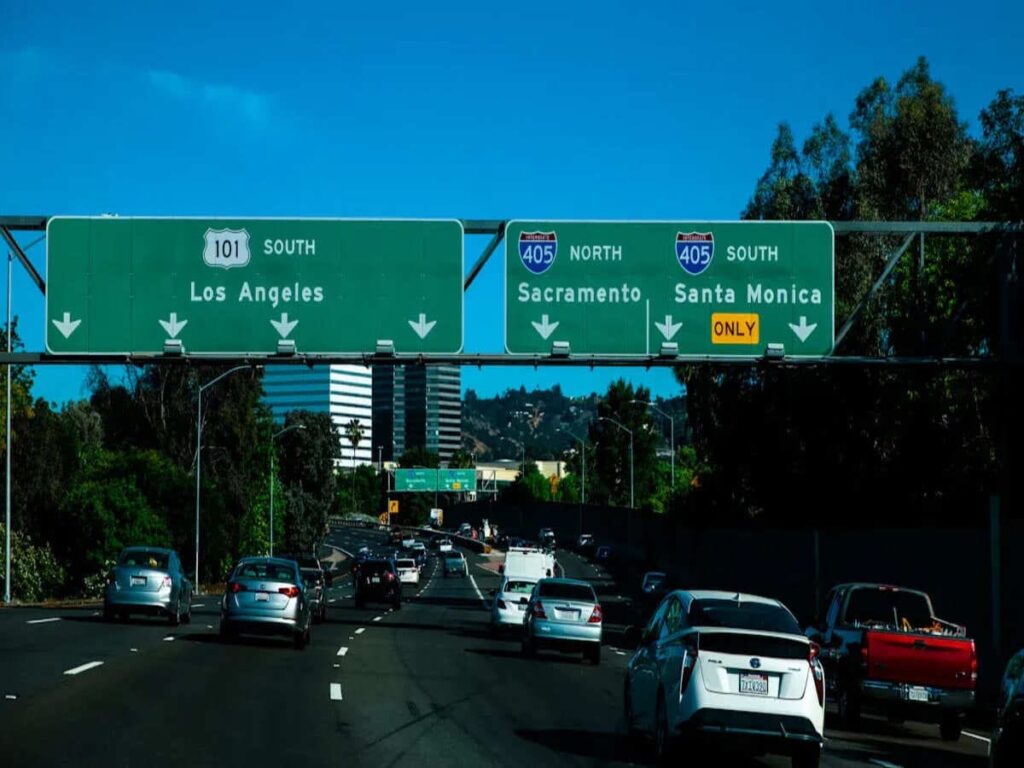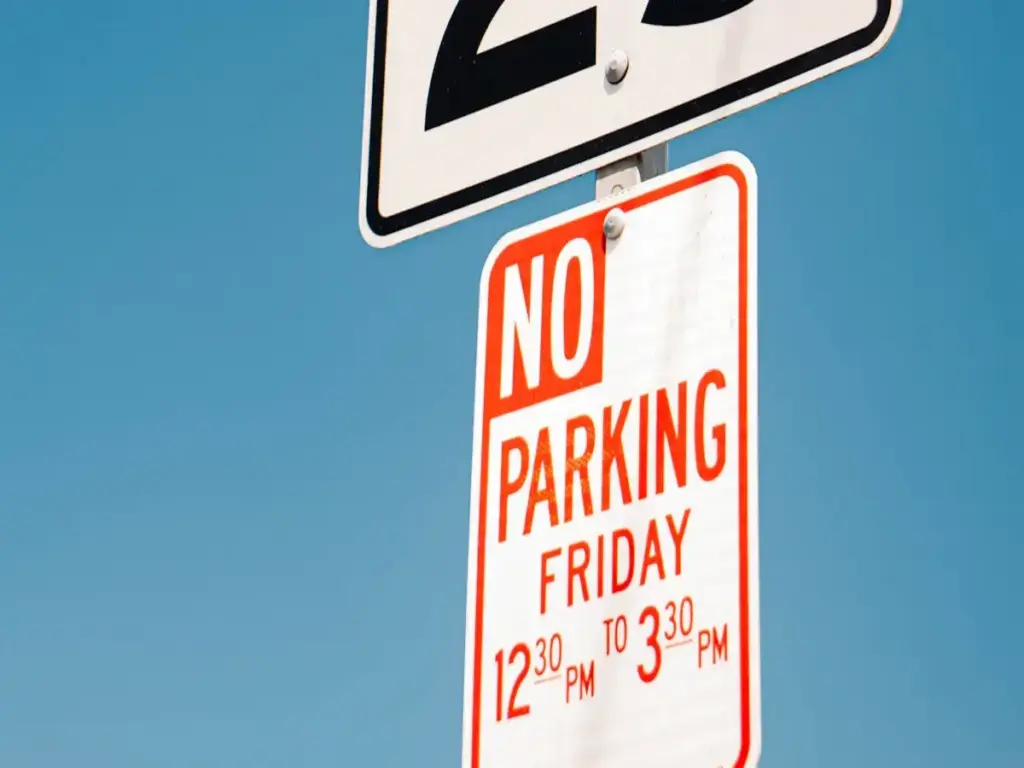
Luzes de advertência LED ajudam a manter as pessoas seguras. Eles são usados por serviços de emergência, em canteiros de obras, e para controle de tráfego. Cada farol, farol piscando, e o estroboscópio avisa as pessoas e ajuda a impedir acidentes. Equipes de segurança escolhem barras de luz, luzes da torre, e luzes de farol piscando. Essas luzes tornam os sinais claros em locais movimentados. Estroboscópios e faróis são os mais populares. Eles têm 40% do mercado. Isso mostra que eles são importantes para a segurança no trabalho. Escolher as luzes de advertência LED certas torna as coisas mais seguras. Também ajuda a cumprir as regras de alerta e mantém todos seguindo as leis de segurança.
| Tipo de dispositivo | Quota de mercado (%) |
|---|---|
| Estroboscópios e faróis | 40 |
| Outras luzes de sinalização | 25 |
| Unidades de combinação visual e sonora | 20 |
| Sinos e buzinas | 10 |
| Alarme de incêndio/pontos de chamada | 5 |
Na OPTRAFFIC, oferecemos uma variedade de Luzes de aviso de LED, incluindo faróis, strobes, e barras de luz, tudo projetado para aumentar a segurança e a visibilidade. Nossas luzes ajudam você a atender aos padrões de segurança, garantindo ao mesmo tempo uma comunicação clara em áreas críticas. Explore a nossa gama hoje e leia o nosso blog, Luzes de aviso de LED para segurança rodoviária: O que saber antes de comprar, para obter mais informações sobre como selecionar as soluções de iluminação certas para suas necessidades.
Takeaways -chave
- As luzes de advertência LED têm muitos tipos. Isso inclui faróis rotativos, strobes, faróis piscando, barras de luz, e luzes da torre. Cada tipo é bom para diferentes necessidades de segurança.
- Escolher a luz de advertência LED certa torna as coisas mais seguras. Economiza energia. Também ajuda você a seguir a lei em caso de emergência, prédio, tráfego, e empregos em aeroportos.
- Colours are important. Vermelho e azul são para veículos de emergência. Âmbar é para veículos de construção e utilitários. Branco ou verde têm usos especiais. Mas eles não devem confundir os motoristas.
- Boas luzes de advertência LED são muito brilhantes. Eles são fortes e podem lidar com o mau tempo. Eles são fáceis de colocar. Eles também atendem às regras de segurança. Isso os ajuda a trabalhar bem o tempo todo.
- Sempre observe as leis locais antes de instalar luzes de advertência LED. Isso ajuda você a evitar multas. Também garante que suas luzes sejam legais e funcionem bem para o que você precisa.
Tipos de luzes de advertência LED
Faróis Rotativos
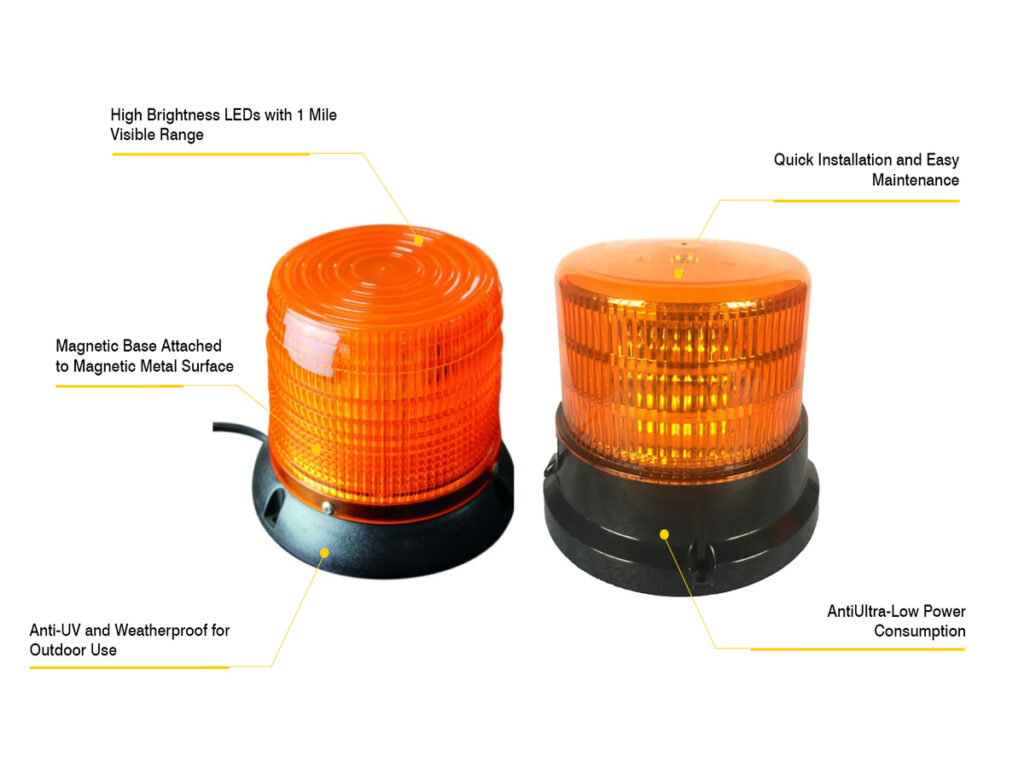
Os faróis rotativos têm uma lâmpada que permanece parada. Um espelho ou lâmpada gira em torno dele. Isso faz com que um feixe de luz em movimento. As pessoas podem ver o farol de todos os lados. Muitos faróis rotativos usam Tecnologia LED. Isso economiza energia. Esses faróis geralmente têm cúpulas coloridas. Você pode colocá-los em veículos, torres, ou edifícios.
Os faróis LED rotativos são fáceis de ver em locais movimentados ou perigosos. Eles são usados em veículos de emergência, Sites de construção, e aeroportos.
- Características: Gira ao redor, muito brilhante, muitas maneiras de montar.
- Vantagens: Torna as coisas mais seguras, pode ser usado em muitos lugares, funciona bem com mau tempo.
- Melhores casos de uso: Fábricas, armazéns, veículos de emergência, e áreas de transporte público.
| Tipo de luz | Recursos de design | Mecanismo Funcional | Fonte de luz | Estilo de montagem/montagem |
|---|---|---|---|---|
| Faróis Rotativos | A lâmpada não se move, mas espelho ou lâmpada gira; muitas vezes tem cúpula colorida | Espelho giratório ou lâmpada faz com que a luz pareça piscar | Quartzo-halogênio/incandescente ou LED | Um farol ou parte de uma barra de luz |
Luzes estroboscópicas
Uma luz estroboscópica emite um curto, flashes brilhantes. Ele usa uma lâmpada de xenônio ou LED. O padrão intermitente ajuda a alertar as pessoas e sinalizar emergências.
- Características: Muito brilhante, padrões de flash podem mudar, muitas cores.
- Vantagens: Fácil de ver, economiza energia, dura muito tempo.
- Melhores casos de uso: Veículos de emergência, alerta sobre perigos na estrada, e trabalho de resgate.
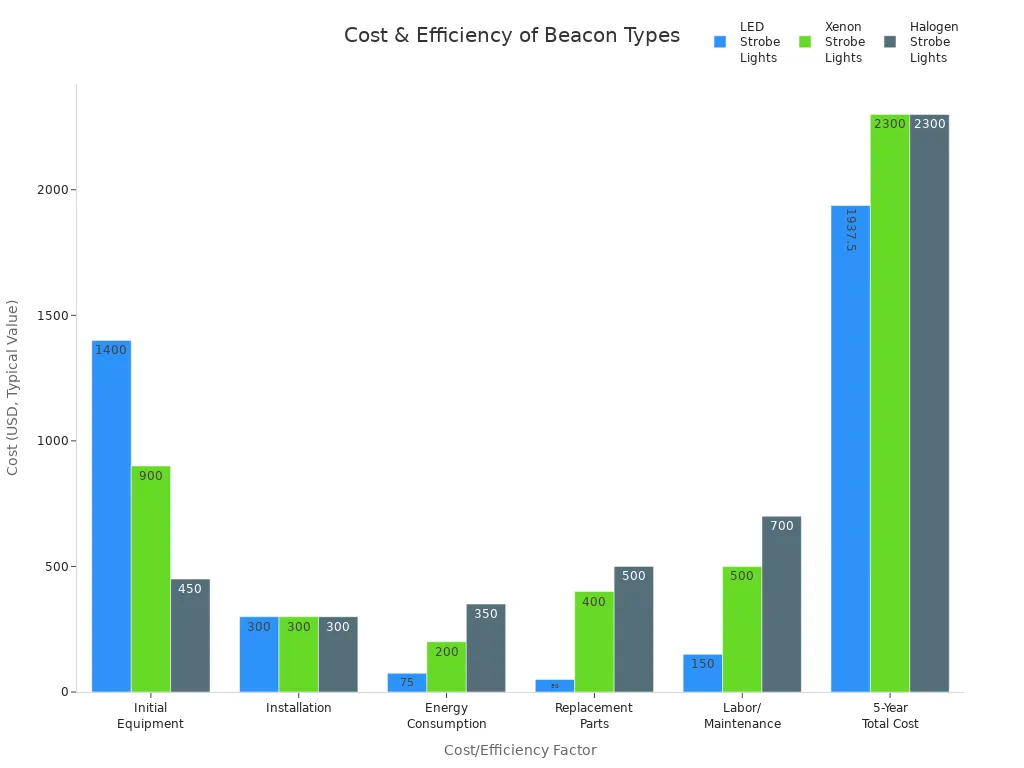
Luzes de farol piscando
Luzes piscantes usam LEDs que ligam e desligam. Eles piscam em horários definidos. Essas luzes chamam a atenção das pessoas e alertam sobre o perigo.
- Características: Acende ao redor, gruda com um ímã, usa muito pouca energia, fácil de configurar.
- Vantagens: Fácil de ver, precisa de pouco cuidado, funciona bem em qualquer clima.
- Melhores casos de uso: Canteiros de obras, Trabalho de estrada, emergências, e controle de tráfego.
| Aspecto de especificação | Detalhes |
|---|---|
| Tamanho | 165mm de largura e 130 mm de altura |
| Lâmpadas LED | 72 LEDs, cada um usa 0,25 W |
| Padrões piscantes | 3 padrões para escolher |
| Tensão | DC 12V |
| Opções de cores | Âmbar, Azul, Vermelho, Branco, ou costume |
| Classificação IP | IP65 à prova d'água |
| Características | Acende ao redor, base magnética, usa pouca energia, anti-UV, rápido de instalar |
Luzes de farol piscantes usam menos energia do que faróis rotativos. Eles não possuem partes móveis. Eles também precisam de menos consertar.
Barras de luz
As barras de luz têm muitas luzes seguidas. Alguns têm peças rotativas ou LED. Os espelhos ajudam a tornar os flashes mais brilhantes.
- Características: Pode ser visto de longe, padrões de flash podem mudar, fácil de montar.
- Vantagens: Visto de todos os ângulos, dura muito, economiza energia.
- Melhores casos de uso: Veículos de emergência, caminhões de serviço, e veículos de trabalho rodoviário.
As barras de luz cobrem mais área do que pequenas luzes de advertência LED. Eles podem brilhar em um só lugar, espalhar, ou faça os dois.
Luzes da torre
As luzes da torre também são chamadas de luzes de pilha. Eles andam em coisas altas ou máquinas. Esses faróis usam holofotes LED para iluminar grandes espaços.
- Características: Economiza energia, dura muito, resiste ao mau tempo.
- Vantagens: Bom para mostrar perigo em fábricas e aeroportos.
- Melhores casos de uso: Aeroportos, pistas, pistas de táxi, e fábricas.
Tower lights can handle bad weather, tremendo, e calor ou frio. They help people and vehicles move safely in big outdoor areas.
There are many types of flashing beacons. This includes led flashing beacon lights and led warning lights. Every place or vehicle can find the right beacon for safety and rules.
Choosing the Right LED Warning Light
Emergency Vehicles
Emergency vehicles need lights that are very bright and always work. Light bars, grille lights, and strobe lights are the main types used. Light bars go on top of police cars, ambulâncias, and fire engines. They shine in all directions and use red, azul, or amber colours to show there is an emergency. Grille lights fit at the front and help people see the vehicle better. Strobe lights flash fast and are easy to see, mesmo com neblina ou chuva. Beacons and rotating beacons also give a steady warning.
Veículos de emergência usam essas luzes para alertar motoristas e pessoas que caminham. O farol ou farol intermitente certo pode ajudar a impedir acidentes e manter todos seguros.
| Categoria de fator | Considerações importantes |
|---|---|
| Desempenho de iluminação | Brilho, padrões de feixe, ajuste de ângulo, opções de cores |
| Durabilidade & Qualidade de construção | Materiais fortes, resistência à água e poeira, recursos à prova de choque, certificações da indústria |
| Instalação & Compatibilidade | Opções de montagem, necessidades de fiação, compatibilidade do veículo, integração de sistemas |
| Recursos adicionais | Padrões de flash programáveis, sincronização |
| Conformidade regulatória | Cores aprovadas, padrões de flash, intensidade, colocação de acordo com as leis locais |
As luzes de advertência LED duram muito tempo e não quebram facilmente. Eles usam menos energia, para que os veículos possam usá-los por mais tempo. Essas luzes são muito brilhantes e ajudam os motoristas a enxergar com mau tempo. Você pode alterar os padrões e cores do flash para diferentes emergências. Seguir a lei é importante, então as luzes devem ter a cor e o brilho certos. As luzes de emergência devem sempre funcionar, então eles precisam ser fortes e confiáveis.
Construção e locais industriais
Locais de construção e industriais usam faróis para manter os trabalhadores seguros. Esses faróis mostram onde estão os perigos e alertam sobre máquinas em movimento. As luzes de farol LED duram muito tempo e consomem pouca energia. Eles brilham intensamente em qualquer clima. Luzes estroboscópicas e luzes intermitentes alertam imediatamente os trabalhadores e motoristas. Eles ajudam as pessoas a ver os perigos rapidamente, mesmo que seja barulhento ou empoeirado.
- Luzes de farol LED acendem em veículos, barreiras, e máquinas.
- Grandes barras de luz cobrem veículos grandes e brilham com luz âmbar em todos os lugares.
- Pequenas barras de luz e minúsculos flashes cabem em veículos menores.
- Luzes estroboscópicas de LED piscam para avisar todos que estão por perto.
- Os holofotes ajudam as pessoas a enxergar à noite ou quando está escuro.
Luzes estroboscópicas de segurança piscam intensamente para alertar sobre máquinas em movimento ou pisos escorregadios. Essas luzes ajudam a impedir acidentes, tornando os perigos fáceis de detectar.
Luzes de advertência LED facilitam a visualização dos perigos na poeira, névoa, ou escuridão. Eles também mostram onde as pessoas não devem se aproximar de máquinas perigosas. Essas luzes são resistentes e podem lidar com locais difíceis. Usar o farol ou farol intermitente correto ajuda a impedir acidentes e mantém todos seguros.
Tráfego e Segurança Rodoviária
O trânsito e a segurança rodoviária precisam de luzes de aviso que sejam fáceis de ver. Light bars, luzes de farol, e faróis intermitentes são usados em veículos de obras rodoviárias e em pontos de trânsito. Essas luzes são muito brilhantes e podem ser vistas de longe. A luz de advertência multifuncional Optsigns fornece luz em todas as direções, dura 100 horas, e funciona na chuva ou no sol. It has many flashing modes and colours for different traffic jobs.
| Type of LED Warning Light | Application/Use Case | Key Features/Effectiveness |
|---|---|---|
| Barras de luz | Top of vehicles | Brilhante, longo, visible from a distance |
| Dash Lights | Inside dashboards | Compactar, extra warning |
| Grille Lights | Vehicle front grille | Adds frontal visibility |
| Surface Mounts | Flat vehicle surfaces | Pequeno, posicionamento flexível |
| Luzes de farol | Top of vehicles | 360-degree visibility |
| Traffic Advisor Lights | Orientar o fluxo de tráfego | Directional signals |
LED warning lights for traffic use focused beams so people can see them in fog or rain. They use less power and last longer than old lights. You can change the colours and flash patterns to follow the law and fit different jobs. Rotary beacons and magnetic solar LED beacons are good for short-term use and emergencies. These lights help keep roads safe for drivers and workers.
Veículos de serviço e utilitários
Veículos de serviço e utilitários precisam de faróis fortes, brilhante, e simples de usar. Os LED âmbar são melhores porque são legais e fáceis de ver. Esses veículos usam barras de luz, luzes de farol piscando, e luzes no painel para alertar outros motoristas quando estiverem trabalhando na estrada. A inundação de cores UBL 2.0 é uma luz de trabalho e uma luz de advertência. Dá 7,200 lumens de luz e pode ser colocado em muitos lugares.
- Os LEDs âmbar funcionam bem durante o dia e à noite.
- As leis dizem que o âmbar é permitido para veículos utilitários e de construção.
- Usar âmbar e branco juntos faz com que as luzes funcionem melhor.
- Fácil de instalar e forte contra intempéries é importante.
Luzes de advertência LED em veículos de serviço atendem a regras de segurança rigorosas. Eles alertam os motoristas sobre veículos lentos ou parados e ajudam a impedir acidentes. Faróis recarregáveis sem fio podem se mover de um veículo para outro. As luzes do painel podem funcionar com outras luzes para um aviso completo. Essas coisas ajudam a manter os trabalhadores seguros e a proteger as pessoas na estrada.
Aeroportos e aeródromos
Aeroportos e aeródromos usam faróis especiais e luzes de advertência LED para guiar os aviões e manter as pessoas seguras. Luzes finais da pista, luzes de guarda de pista, e luzes de borda de pista de táxi usam LEDs para brilho, sinais claros. Faróis giratórios em postes altos mostram aos pilotos onde fica o aeroporto. Luzes de obstrução marcam perigos e ajudam a manter os aviões seguros.
- As luzes finais da pista usam LEDs vermelhos constantes.
- Luzes de guarda de pista piscam em amarelo nos cruzamentos.
- As luzes de borda da pista de táxi usam LEDs azuis.
- As luzes de aproximação usam LEDs brancos ou vermelhos para ajudar os aviões a pousar.
- LEDs movidos a energia solar economizam energia e funcionam em locais distantes.
Anexo ICAO 14 gives the rules for airport lighting. These rules say how bright, que cor, how fast, and where to put the lights. Bright LED warning lights help pilots and ground staff see well when taking off, landing, or moving on the ground. Smart lighting systems can change brightness for weather or time of day. LEDs last a long time and do not need much fixing, so airports stay safe and work well.
LED warning lights at airports use less power, custa menos, and help keep everyone safe on the ground and in the air.
Key Factors for Selection
Visibilidade e distância
Visibility is very important for warning lights. The colour and brightness help people see them well. Blue and white lights are easy to see in the day. Red and amber work better at night. Amber lights get attention fast but do not scare people. Bons LEDs mantêm sua cor e brilho por muito tempo. Isso faz com que os sinais de alerta permaneçam fortes. A força da luz, chamados lúmens, também é importante. As luzes amarelas geralmente parecem mais brilhantes. As luzes azuis podem parecer menos brilhantes. O clima pode mudar o quão longe você vê a luz. Chuva, névoa, ou a poeira pode bloquear algumas cores mais do que outras. Padrões piscantes e onde você coloca a luz ajudam as pessoas a perceber.
Dica: Escolha luzes de advertência com lúmens suficientes e a cor certa para sua área.
- A cor e o comprimento de onda do LED alteram a qualidade da sua visão em diferentes condições climáticas.
- Bons LEDs mantêm os sinais brilhantes e claros.
- Padrões piscantes e onde você coloca a luz fazem com que ela funcione melhor.
- Resistência ao tempo (Classificação IP) ajuda a luz a trabalhar lá fora.
Eficiência energética
As luzes de advertência LED consomem muito menos energia do que as luzes antigas. Os LEDs podem economizar até 90% de poder. Eles duram até 25 vezes mais do que lâmpadas antigas. LEDs emitem muito pouco calor, então eles economizam ainda mais energia. Isso significa que você os conserta menos e paga menos para operá-los. Os LEDs não contêm substâncias prejudiciais em seu interior, então eles são mais seguros para a natureza. Novos LEDs podem mudar de cor e padrão. Isso os torna bons para muitos trabalhos de alerta.
Durabilidade e resistência climática
A durabilidade é importante para luzes usadas no exterior. Muitas luzes de advertência LED têm coberturas fortes feitas de alumínio ou plástico resistente. Alguns usam parafusos de aço inoxidável e pinos de cobre para evitar a ferrugem. Boas luzes têm altas classificações de IP, como IP65 ou IP67. Isso significa que eles impedem a entrada de poeira e água. Algumas luzes de advertência podem flutuar e funcionar sob chuva forte. Essas coisas ajudam as luzes a durar mais e a funcionar bem em locais difíceis, como canteiros de obras ou aeroportos..
Montagem e Instalação
A maneira como você coloca uma luz de advertência muda a forma como ela funciona. Montagens permanentes, como parafusos ou porcas, mantêm a luz firme. Estes são melhores para veículos rápidos ou locais difíceis. Suportes magnéticos e ventosas permitem mover a luz facilmente. Mas eles podem não permanecer em altas velocidades. As montagens de suporte são boas para barras leves e trabalhos pesados.
| Método de montagem | Descrição | Efeito no desempenho |
|---|---|---|
| Montagens Magnéticas | Use ímãs para fixar | Fácil de mover, não é seguro em altas velocidades |
| Montagens Fixas por Parafuso | Fixado com parafusos | Muito seguro, funciona em todas as condições |
| Montagens de suporte | Use colchetes, muitas vezes nos telhados | Mantém o tempo afastado, bom para luzes pesadas |
| Ventosas | Temporário, para painel ou viseira | Fácil de colocar, não para uso prolongado |
Conformidade regulatória
Todas as luzes de advertência devem seguir as regras locais e nacionais. No Reino Unido e na UE, As luzes de advertência LED precisam atender à segurança, energia, e padrões ambientais.
| Norma Regulamentadora | Descrição |
|---|---|
| Diretiva de Baixa Tensão (LVD) | Abrange a segurança elétrica para equipamentos entre 50-1000 V CA ou 75-1500 Em CC. |
| Diretiva EMC | Garante que os produtos não causem ou tenham problemas eletromagnéticos. |
| Diretiva RoHS | Limita materiais perigosos em eletrônicos. |
| Diretiva Conceção Ecológica | Define regras de energia e design para iluminação. |
| Diretiva REEE | Precisa de descarte adequado e reciclagem de eletrônicos. |
| Marcação UKCA/CE | Mostra que o produto atende às regras do Reino Unido ou da UE. |
As aulas SAE ajudam a escolher o brilho de uma luz de advertência. Aula 1 é mais brilhante e melhor para veículos de emergência. As classificações IP mostram quão bem a luz impede a entrada de poeira e água. Sempre verifique essas classificações para ter certeza de que a luz de advertência é adequada para você.
Cor e considerações legais
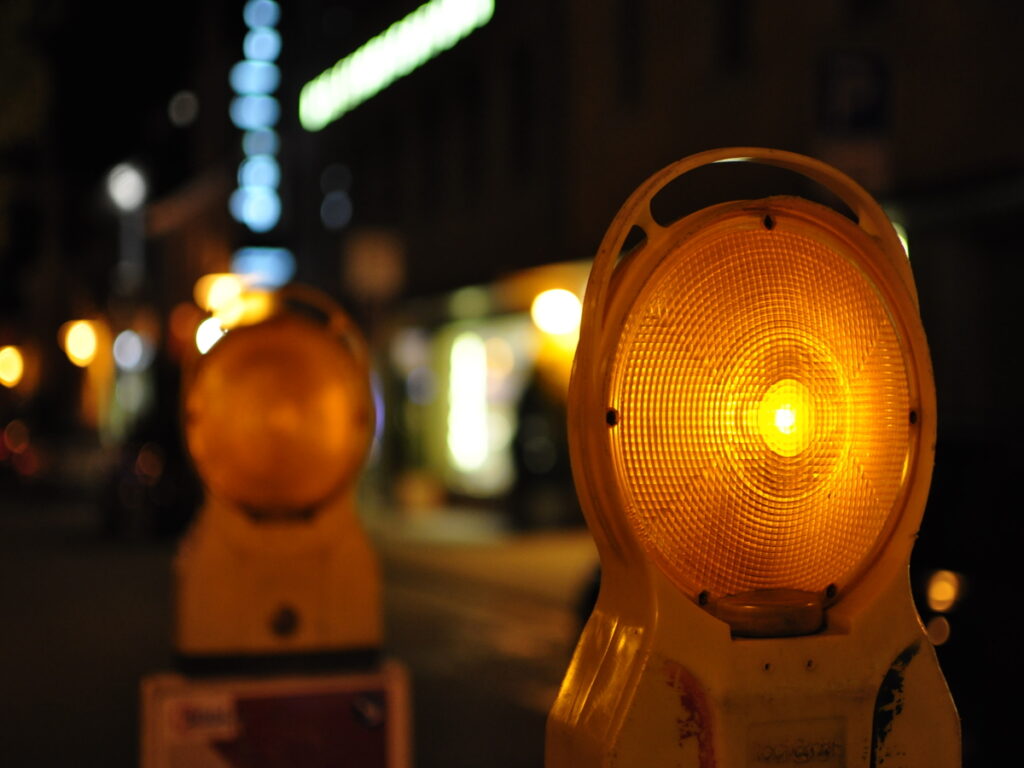
Opções de cores
As luzes de advertência LED têm cores diferentes. Cada cor significa algo especial para segurança. A tabela abaixo mostra as cores principais, para que eles são usados, e o que eles significam:
| Cor do LED | Comprimento de onda típico (nm) | Usos comuns e significado | Notas sobre Importância e Regulamentações |
|---|---|---|---|
| Vermelho | 620-750 | Carros de bombeiros, ambulâncias, Veículos EMS, aviso traseiro em veículos policiais, luzes de freio de emergência | Mostra urgência, se destaca no mau tempo, reservado para serviços de emergência |
| Azul | 450-495 | Veículos policiais, Polícia Rodoviária, alguns veículos de segurança | Vinculado à aplicação da lei, alto contraste, frequentemente combinado com branco |
| Âmbar/Amarelo | 570-590 | Veículos de construção, caminhões de reboque, veículos utilitários, limpa-neves, ônibus escolares | Permitido para avisos não emergenciais, alta visibilidade, sem significado de emergência |
| Branco | Todos os comprimentos de onda visíveis | Iluminação de cena, Áreas de trabalho, luzes de remoção, vigas de inundação | Dá luz geral, frequentemente usado com outras cores para melhor visibilidade |
| Verde | 495-570 | Veículos de comando, veículos de bombeiros voluntários, marcadores de emergência hospitalar | Usado para funções de comando ou voluntário, não para aviso geral |
- Luzes vermelhas piscando em veículos de emergência significam que há perigo.
- Luzes âmbar piscantes em canteiros de obras e caminhões de reboque alertam os motoristas e protegem os trabalhadores.
- Os veículos de segurança usam cores diferentes para ajudar a controlar o trânsito ou mostrar emergências.
Âmbar é a cor mais utilizada por veículos não emergenciais. Você vê luzes âmbar piscando em veículos de obras rodoviárias, caminhões utilitários, e ônibus escolares. Luzes vermelhas significam que algo é muito urgente. Uma luz vermelha piscando diz às pessoas para parar ou se afastar. Ambulâncias e carros de bombeiros usam luzes vermelhas piscando. Luzes âmbar não deixam as pessoas em pânico, mas ainda assim são notadas. As luzes vermelhas são fáceis de ver no nevoeiro, chuva, ou à noite. Luzes piscantes âmbar ajudam os motoristas a ver veículos lentos ou parados. Tanto o vermelho quanto o âmbar são importantes para a segurança nas estradas e nos canteiros de obras.
Regulamentos do Reino Unido
A lei do Reino Unido tem regras rígidas para as cores das luzes de advertência de LED. Os Regulamentos de Iluminação de Veículos Rodoviários 1989 e o Regulamentos de construção e uso de veículos rodoviários 1986 diga quais veículos podem usar determinadas cores. Apenas veículos de emergência podem usar luzes azuis piscantes. Polícia, fogo, e veículos de ambulância podem ter luzes azuis e sirenes. Regulamento 16 não permite que outros veículos usem faróis de alerta azuis. Regulamento 37(4) diz que apenas veículos de emergência podem ter sirenes.
Luzes vermelhas também são controladas por lei. Apenas serviços de emergência podem usar luzes vermelhas piscando. Luzes vermelhas na traseira dos veículos mostram frenagem ou parada. Nenhum outro veículo pode usar luzes vermelhas piscantes na frente. Luzes piscantes âmbar são permitidas para construção, utilidade, e veículos de trabalho rodoviário. Âmbar não é restrito, tantos veículos usam luzes âmbar piscantes para segurança. Não existem regras especiais para luzes brancas ou verdes, mas estas cores não devem confundir os condutores nem parecer sinais de emergência.
Dica: Verifique sempre as regras mais recentes do Reino Unido antes de instalar luzes de advertência LED. Usar a cor errada pode causar multas ou problemas legais.
As luzes de advertência LED têm muitos tipos. Cada farol é bom para um trabalho especial. Faróis giratórios são usados em aeroportos e fábricas. Luzes estroboscópicas são melhores para veículos de emergência. Luzes piscantes ajudam a manter estradas e locais de construção seguros. Barras de luz e faróis de torre tornam grandes áreas mais seguras.
- Olhe para as luzes do seu farol para ver se você precisa de mais segurança.
- Fale com especialistas ou leia as regras antes de escolher um farol.
Obter novos faróis torna as coisas mais seguras e ajuda você a seguir a lei.
Perguntas frequentes
Qual é a diferença entre luzes estroboscópicas e faróis rotativos?
Luzes estroboscópicas piscam rapidamente e chamam a atenção com rajadas de luz. Faróis giratórios usam um espelho giratório ou lâmpada para criar um feixe em movimento. Strobes atendem emergências. Faróis rotativos funcionam bem em áreas movimentadas.
Qual é a diferença entre luzes estroboscópicas e luzes LED?
Luzes estroboscópicas e luzes LED são dois tipos diferentes de tecnologias de iluminação, cada um com recursos e aplicativos exclusivos.
🔦 Luzes estroboscópicas
- Como eles funcionam: Luzes estroboscópicas usam capacitores para liberar energia armazenada rapidamente, fazendo com que um tubo de flash de xenônio produza um breve, flash intenso de luz.
- Brilho: Alto brilho instantâneo, adequado para situações que exigem iluminação forte em rajadas curtas.
- Aplicações: Comumente usado em fotografia, performances de palco, luzes de alerta de veículos de emergência, etc..
- Vantagens: Alto brilho, ideal para congelar objetos em movimento rápido.
- Desvantagens: Alto consumo de energia, gera mais calor, e vida útil mais curta.
💡 Luzes LED
- Como eles funcionam: As luzes LED usam materiais semicondutores para emitir luz quando uma corrente elétrica passa por elas, fornecendo iluminação contínua e estável.
- Brilho: Brilho moderado, adequado para necessidades de iluminação a longo prazo.
- Aplicações: Amplamente utilizado em iluminação interna, exibições, sinais de trânsito, etc..
- Vantagens: Eficiente de energia, baixa produção de calor, longa vida útil, tamanho compacto.
- Desvantagens: Brilho instantâneo mais baixo em comparação com luzes estroboscópicas, não é ideal para rajadas rápidas de luz.
⚖️ Resumo de comparação
| Recurso | Luzes estroboscópicas | Luzes LED |
|---|---|---|
| Fonte de luz | Tubo de flash de xenônio | Semicondutor (LIDERADO) |
| Modo de iluminação | Breves flashes intensos | Luz estável contínua |
| Eficiência energética | Baixo | Alto |
| Saída de calor | Alto | Baixo |
| Vida útil | Curto | Longo |
| Usos comuns | Fotografia, estágio, luzes de emergência | Iluminação interna, exibições, sinais de trânsito |
Conclusão: A escolha entre luzes estroboscópicas e luzes LED depende das necessidades específicas da sua aplicação.
As luzes de advertência LED podem ser usadas para veículos de emergência e de construção??
Luzes de advertência LED cabem em muitos veículos. Veículos de emergência usam luzes vermelhas ou azuis. Veículos de construção usam luzes âmbar. Cada cor segue regras de segurança. Luzes LED ajudam motoristas e trabalhadores a se manterem seguros.
Como você instala uma barra de luz LED em um veículo?
A maioria das barras de luz LED vem com suportes ou montagens magnéticas. O instalador fixa a barra no teto ou pára-choque. Os fios se conectam à fonte de alimentação do veículo. Sempre verifique as instruções antes de começar.
As luzes de advertência LED são adequadas para todas as condições climáticas??
Luzes de advertência LED funcionam na chuva, neve, e poeira. Muitos têm classificações à prova d'água como IP65 ou IP67. Capas fortes protegem as luzes. Esses recursos ajudam as luzes a durar mais tempo ao ar livre.

